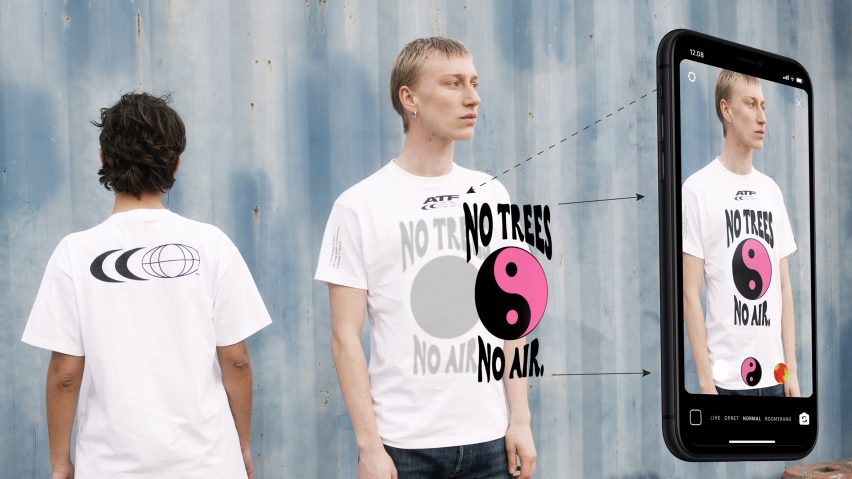
Eight high-tech garments that are more than just clothing
Knitted jumpers that block facial recognition software and clothing that detects when its wearer is anxious are among the high-tech garments featured in this roundup.
The past few years have seen an increasing trend for designers to test the limits of clothing by incorporating both new and established technologies into garments in order to make them move, change colour and conceal hidden messages.
From expandable pieces that grow with their wearer to jackets laced with solar panels, here are eight high-tech clothing projects from Dezeen's archive:
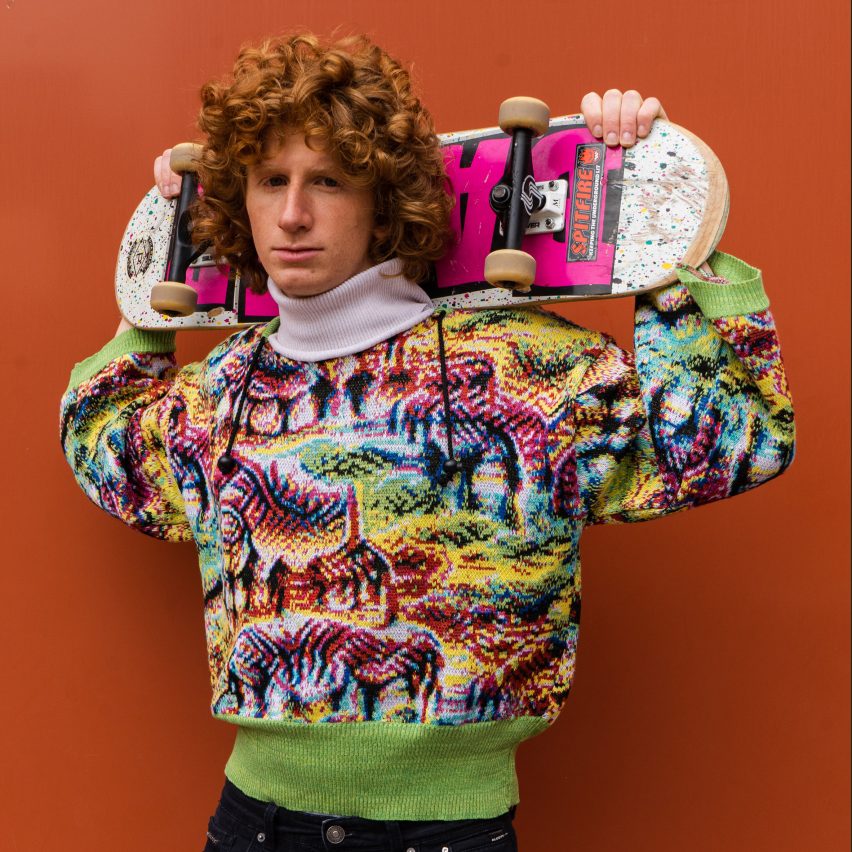
Manifesto Collection by Cap_able
Manifesto Collection is a selection of knitted garments designed to block facial recognition software and protect the wearer's biometric data without them having to cover their face.
Italian startup Cap_able added arrangements of special patterns to the clothing that were developed by artificial intelligence (AI) algorithms to identify the wearers as animals in order to protect their facial identity.
Find out more about Manifesto Collection ›
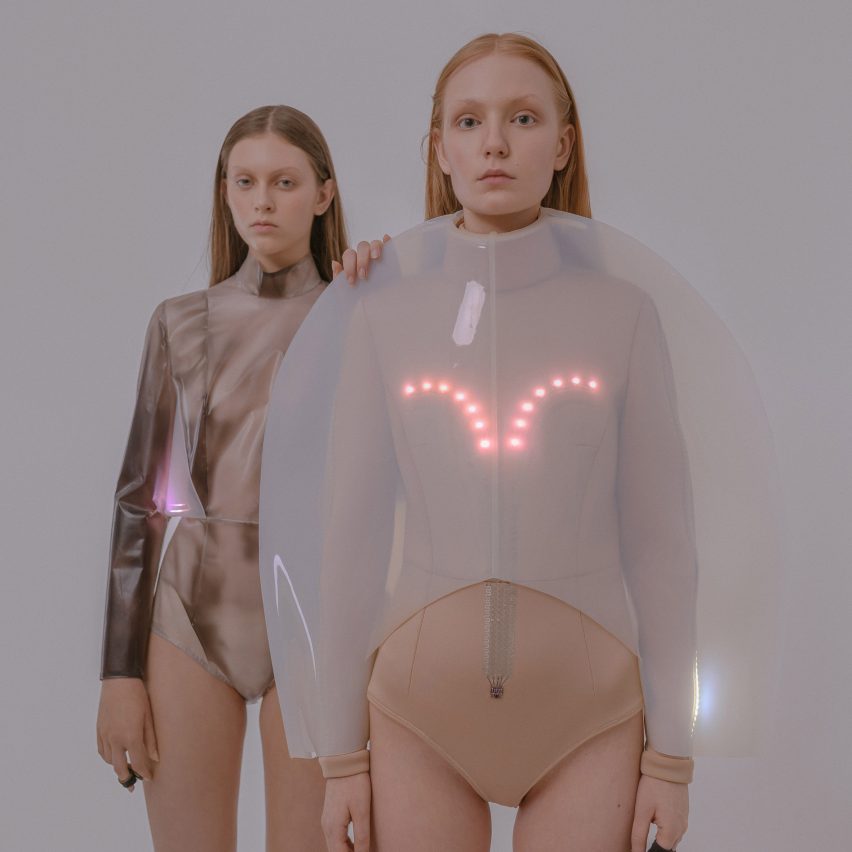
Emotional Clothing by Iga Węglińska
Polish fashion designer Iga Węglińska created a pair of polysensory garments that respond to their wearers' stress levels by changing colour or emitting flashing lights to detect shifts in mood.
The two tops react to their wearers' temperature, heart rate and Galvanic Skin Response (GSR) via in-built sensors, which trigger visual changes that indicate heightened anxiety.
Węglińska designed the collection as part of her doctoral dissertation at Krakow's Academy of Fine Arts in order to "broaden the experience of clothing".
Find out more about Emotional Clothing ›
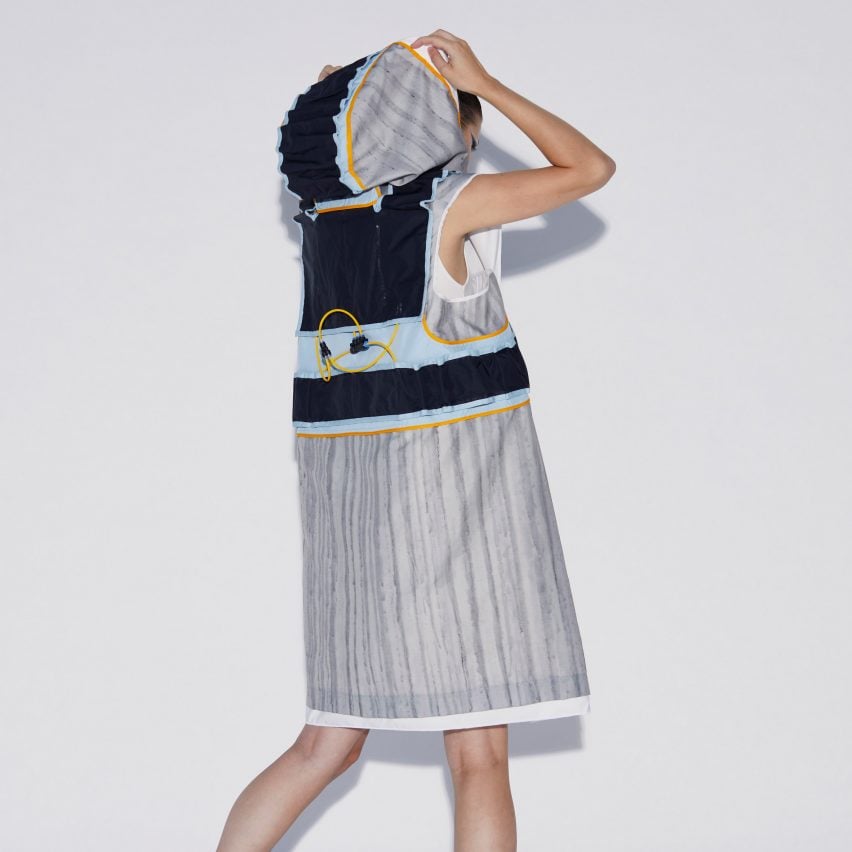
Soft Assembly by Pola Demianiuk
Soft Assembly is a collection of kinetic garments designed to curl around their wearer's body using built-in inflatable elements that expand into dynamic forms.
The clothing owes its movement to soft robotics – a type of robotics focused on technologies that mimic living organisms, also known as biomimicry.
Swedish School of Textiles graduate Pola Demianiuk, who created the designs as part of her postgraduate degree, believes the concept could be used to assist people with mobility issues in getting dressed.
Find out more about Soft Assembly ›
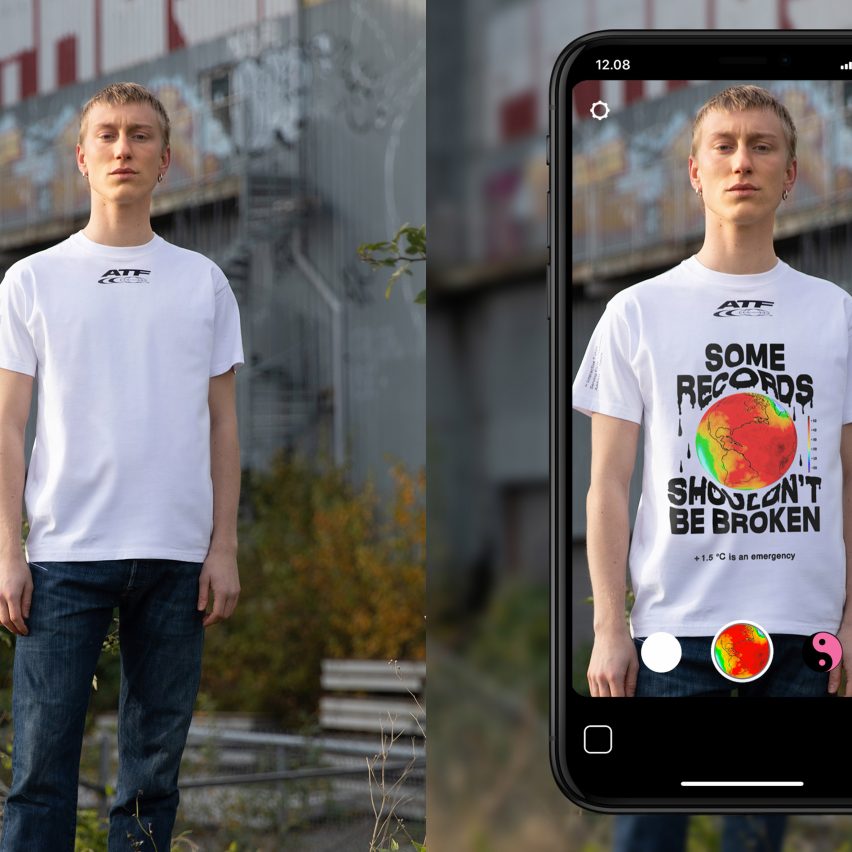
The Last Statement T-shirt by Virtue for Carlings
These T-shirts appear almost blank to the naked eye but reveal topical political messages when viewed through a smartphone using Facebook's augmented-reality platform Spark AR.
Creative agency Virtue designed the shirts for Swedish retailer Carlings, which claims that their digital element makes the garments longer-lasting and more versatile.
Find out more about The Last Statement T-shirt ›

Expandable clothes by Petit Pli
Wearable technology company Petit Pli launched a unisex collection of mono-fibre polyester clothes that expand to fit their wearer thanks to their stretchy material.
The garments were made with pregnant women in mind, while their adaptability was also informed by reducing the environmental impact of the fashion industry.
London-based Petit Pli previously designed a children's line of expandable clothes that stretch to fit kids as they grow.
Find out more about these expandable clothes ›
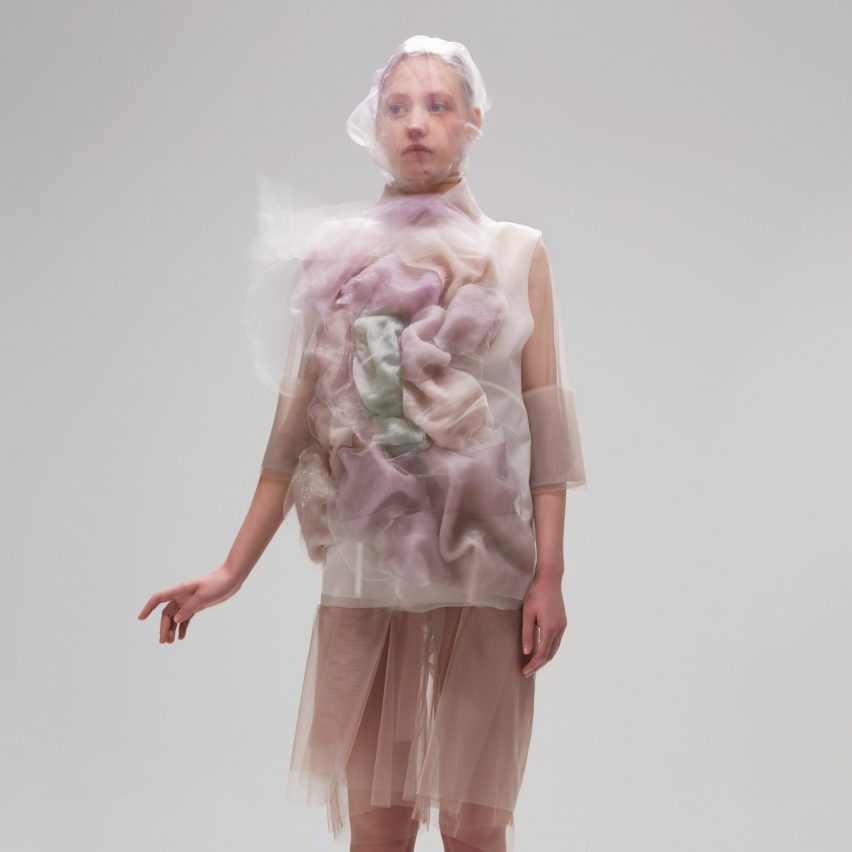
Flowing Water, Standing Time by Ying Gao
Flowing Water, Standing Time is a pair of robotic dresses made from silicone, organza and glass elements that respond to their environment by rippling, expanding and contracting as if they were living creatures.
Montreal-based fashion designer Ying Gao designed the dresses to react to colours in their immediate surroundings using sensors. Tiny cameras are also linked to an in-built Raspberry Pi computer, which collects data that activates actuators and magnets that cause the garments to move.
Gao has previously created other autonomous clothing collections, including dresses that become animated "in the presence of strangers".
Find out more Flowing Water, Standing Time ›
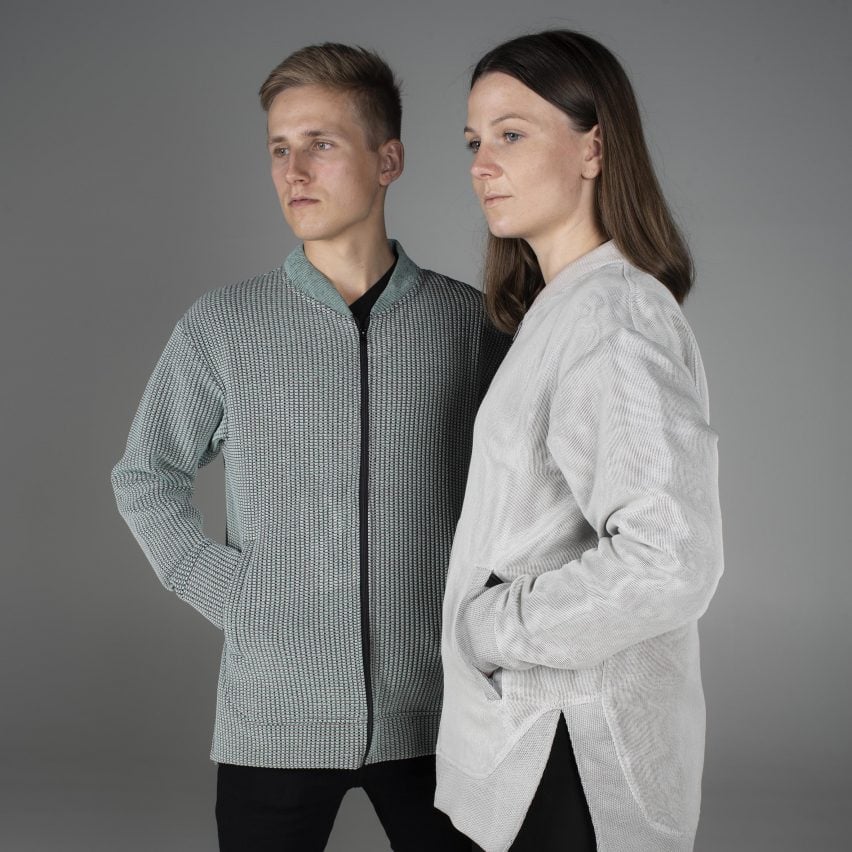
Sun-Powered Textiles by Aalto University researchers
Design and physics researchers at Finland's Aalto University hid solar panels within the fabric of this prototype jacket, which was created to harvest energy from the sun while concealing the jacket's technology.
Called The Sun-Powered Textile Project, the clothing is machine-washable and aims to provide an energy-autonomous product that can power wearable devices including humidity- or temperature-measuring sensors.
Find out more about Sun-Powered Textiles ›
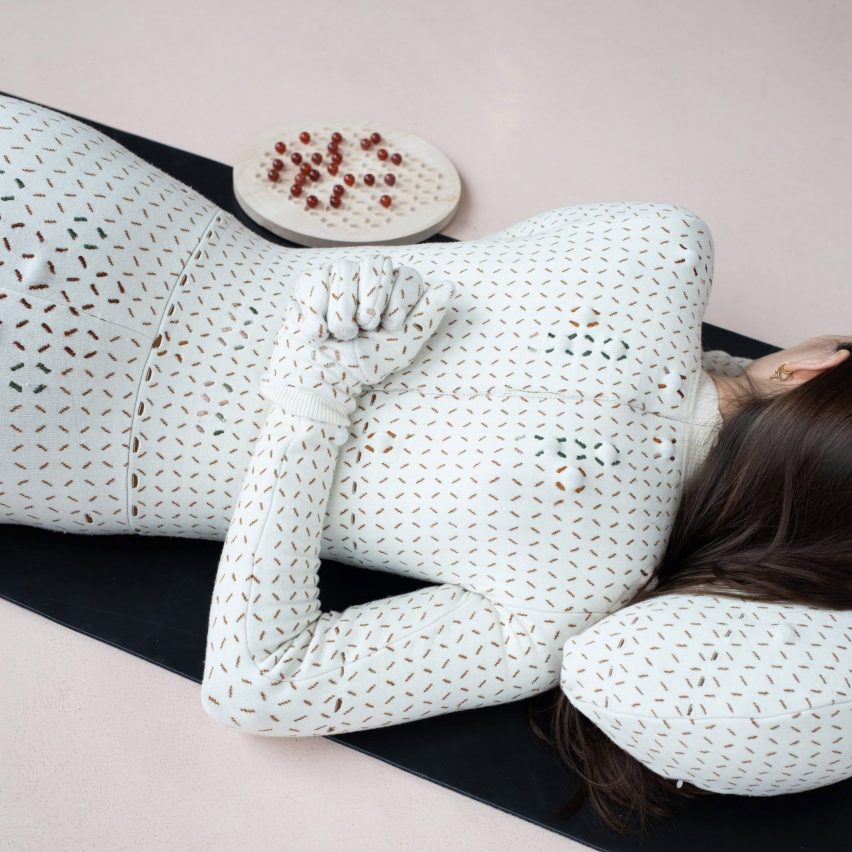
The Healing Imprint by Laura Deschl
Designer Laura Deschl was informed by the benefits of acupressure and yoga-like movement when creating The Healing Imprint – her graduate project completed while studying at Design Academy Eindhoven.
Deschl produced custom-knit garments that look like sportswear but are stitched with a grid so that small massage balls can be inserted into the fabric and placed onto specific acupressure points on the body, feet, hands and head.
The Healing Imprint was designed as an exploration of how physical therapies can help people dealing with psychological trauma.
Find out more about The Healing Imprint ›